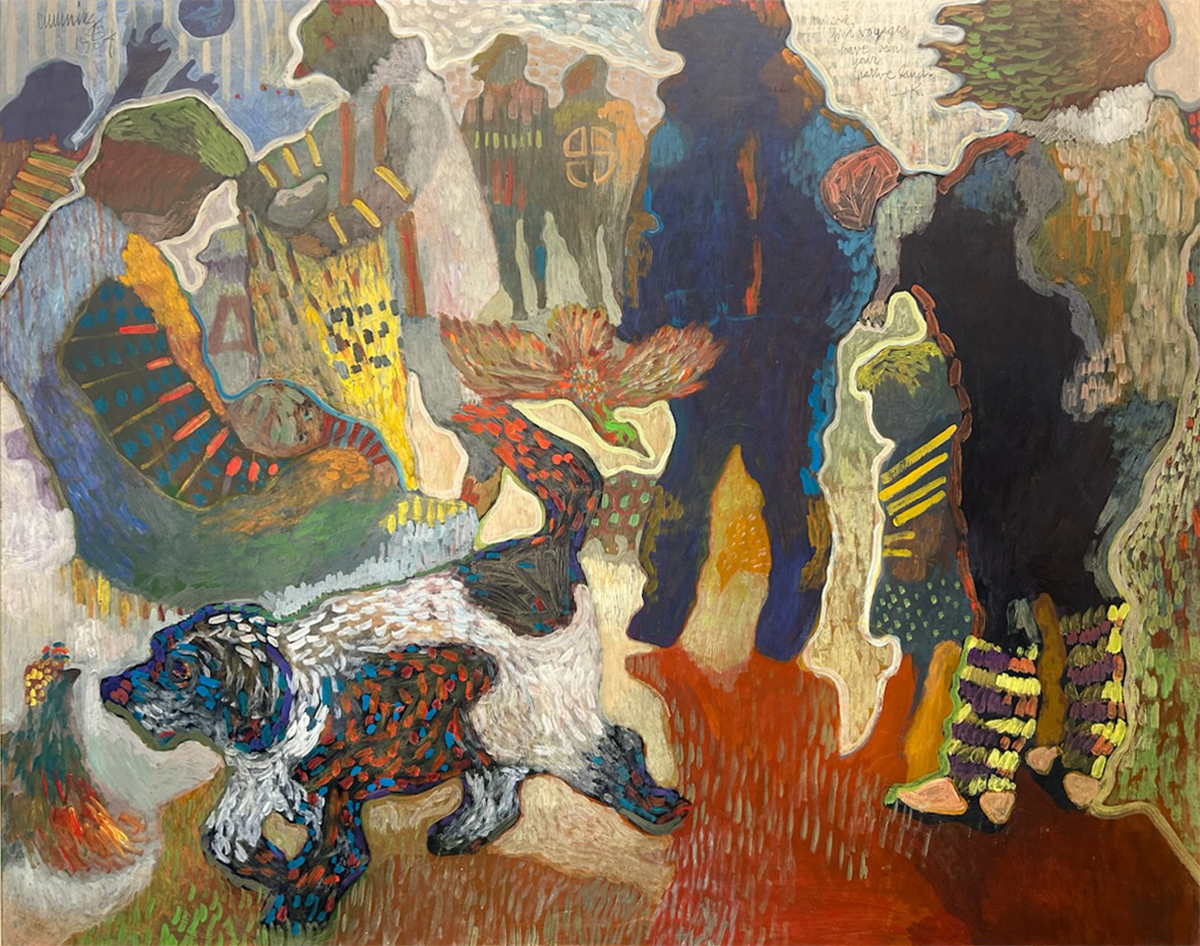A Peak into MoNA Education: How Museum Educators Across WA Use Inquiry to Create Belonging
Take a minute to look at this image…
Yes, a whole minute!
Are you sure you looked at this image for a whole minute?
Now that we’ve looked for a whole minute…ask yourself, “what is going on in this image?”
So, you see… (insert what you thought about here). What do you see that makes you say that?
Oh, because (insert your evidence here).
What more can you find? (Yes, go find more!)
You’ve just experienced (~in your mind~) a solo Visual Thinking Strategies (VTS) discussion. VTS is what educators and academics call an ‘inquiry-based learning strategy’—where a facilitator engages learners by asking questions or posing real-life problems. Inquiry-based strategies require active participation from students and focus on student interests in the topic at hand. There are many inquiry-based strategies, and the MoNA Education team uses VTS as a tool to connect students to the art on display through facilitated group discussions.
MoNA’s Learning and Engagement Coordinator, Dillyn Adamo, presenting at the Washington Museum Association’s 2025 Conference, “Common Threads” along with Lindsey Newton from the Northwest Museum of Arts & Culture.
But MoNA is not the only museum who uses this strategy! Recently, I (MoNA’s Learning & Engagement Coordinator, Dillyn Adamo) was invited to present alongside the Northwest Museum of Arts & Culture (MAC in Spokane, WA) School Programs Manager, Lindsey Newton, at the 2025 Washington Museum Association’s Annual Conference Common Threads. We used this opportunity to share how both museums use VTS in their educational programs, across partnerships and broadly connect visitors to each organizations’ mission. VTS is our “common thread” and both MoNA & MAC weave VTS throughout their education programs to promote student curiosity, critical thinking and social emotional development.
While our presentation dove into Visual Thinking Strategies research & theory, here is a short recap:
Abigail Housen, cognitive psychologist, researched “what happens” cognitively when people look at art & how to develop those skills.
By interviewing over 4,000 folks from 5-95, she developed the Theory of Aesthetic Development.
Housen and then MoMA Education Director Philip Yenawine used the Theory of Aesthetic Development to measure growth in visual literacy in museum educational settings
This process resulted in the Visual Thinking Strategies method
Research on Visual Thinking Strategies shows that this method works because it simultaneously meets the viewer’s natural inclination to engage with the art piece and stretches the viewer’s ability to interpret an image.
Beyond visual literacy, VTS also promotes language development, critical thinking skills, social-emotional learning, and helps students develop a sense of self both within a community and as a learner.
Image credit: William Cumming, Return to Odysseus: Tribute to Nikos Kazantzakis, 1984, tempera on board, MoNA Permanent Collection, gift of Marshall and Helen Hatch
If you’ve been involved in the MoNA Link program, perused our Art Lesson Archives, or chaperoned a class field trip with your young family member you’ve likely experienced VTS at MoNA! We integrate this evidence-based learning strategy into many of our educational programs to connect program participants with the art. VTS helps students connect with MoNA’s exhibitions by allowing groups to self-direct their own interests, use critical thinking to reflect on observations & evidence, and participate in respectful dialogue as a group.
So next time you are at a museum or looking at a piece of art with a group of folks, take a minute and ask: “what is going on here?” You might be surprised & delighted by the ideas they share!



